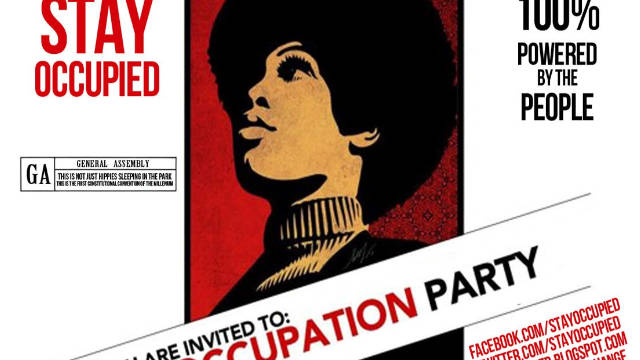Recently in class, we analyzed Occupy Wall Street. This article–from the Journal News, a local paper from my home town in Westchester–focuses on how music has become a central component of Occupy Wall Street. “The sound of insistent drumming…announce[s] the location of the Occupy Wall Street home base long before its inhabitants are otherwise seen or heard.” This alone is a major factor of any protest or social movement. In the past, there were relentless, unified chants that could be heard at protests, but now, we hear all different kinds of music drifting out from Occupy Wall Street. “The soundtrack (for Occupy Wall Street) is just as democratic and grass roots as the movement…” This diversity makes sense, because Occupy Wall Street is composed of the 99 percent, encompassing millions of people with differing musical tastes.
As it grows, both in the actual participation size and as it permeates everyday society, Occupy Wall Street has gained some famous musical supporters. David Crosby, Graham Nash and Tom Morello–all recording artists, the last one a former member of the band “Rage Against the Machine”–have all performed for Occupy Wall Street. There have been enough musical contribution that “[Tom Morello] has also volunteered to contribute to an album of protest songs that Occupy Wall Street is putting together as a fundraiser this winter.” I am intrigued by this idea of creating a list of compositions/performances to represent Occupy Wall Street. How will the public respond to this, and are they choosing to do this in the winter because it is going to be brutally cold and they need something to keep people engaged? A “national-anthem-esq” playlist of songs could certainly increase the popularity of Occupy Wall Street, as it adds to the “Occupy cultural” that it is creating.
Another topic that I find interesting, and I am constantly searching for in the news (as my previous blog posts show) is how art is transforming (art meaning any form or medium of art). This article also briefly brings the issue of music as a changing media to the limelight. “If Occupy Wall Street has no anthem yet, it’s partly due to how a new generation experiences music: through personalized iPod playlists streaming through headphones instead of communal songalongs.” Certainly, music has become much more personalized: people used to walk around with Boom-Boxes on their shoulders as opposed to headphone ear-buds in their ears. This probably has had an effect on Occupy Wall Street, as this individualism only increases the variety that the participants have, thus making it harder to unify them behind one cause or ideal. I wonder if they will be able to surmount this dilemma with this new album, or if more aggressive action is necessary to persuade people to place “Occupy Wall Street Music” on their iPod.








